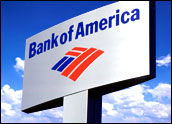
Consumers face a number of hurdles if they want to switch banks — which they increasingly do, as their banks continue to raise fees, raise minimum balances, and create entirely new charges.
Some bank policies are, in fact, designed to make it challenging — and expensive — for customers to walk away, found a study by Consumers Union, the policy and advocacy arm of Consumer Reports.
Consumers are pushing back against the growing fees at banks, especially the largest institutions that tend to be the most expensive, Michael McCauley, media director for Consumers Union, told CRM Buyer.
“The new fees and higher minimum balances are making consumers take a closer look at their bank accounts and the alternatives that are out there,” he said.
What they oftentimes find is that smaller community banks and credit unions are cheaper and more customer- friendly. So they leave their big bank institution — or at least try to.
“If consumers are unhappy with their bank, they can find it can be a difficult process to leave — and it shouldn’t be,” McCauley said.
It Costs Money to Move Money
Switching banks is not for people on a tight budget or living paycheck to paycheck, as the process can wind up costing between US$32 and $60, if not more.
In some cases, depending on how long an account has been open, the bank will levy a fee for closing an account or transferring money into a new account.
HSBC, PNC and US Bank levy a $25 fee to close an account that has been open for fewer than 180 days, according to the report. BB&T and Citi charge a $25 fee for accounts that are closed within 90 days.
Consumers Union was unable to find any bank that would provide a free, same-day electronic transfer of money into a new account at a different bank. The top 10 banks all charged for wire transfers or certified checks — which added between $7 and $10 for certified checks or $24 to $30 for a wire transfer — to the tally.
A consumer can also get zapped by a penalty fee after leaving a bank if a check should come in or if bank fees are applied after money has been transferred.
Beware of Zombie Accounts
Some banks, including Chase and Bank of America, will allow old accounts to reopen if a deposit to the account is received, such as a direct deposit or tax refund.
There are no solid statistics on how often this happens, but conventional wisdom suggests it is fairly common, Claes Bell, senior banking reporter with Bankrate.com, told CRM Buyer.
“Given the number of people who use direct deposit and have signed up to have their tax refunds deposited electronically, I am sure a stray deposit can easily happen,” said Bell.
In some cases, consumers suffer more than just the inconvenience of money gone astray — they are hit up with hundreds of dollars in penalty fees or monthly maintenance fees if a deposit is below what is needed to avoid them.
Navigating the Mess
Perhaps most galling of all, banks do not provide clear disclosure — even in their fine print — about the range of fees that can be applied to a customer’s account as it is shut down — and even afterward.
Consumers Union couldn’t find any bank among the top 10 that provided clear guidance. Rather, it found that customer service representatives gave conflicting advice to secret shoppers about the proper way to close an account.
The Cost of Being Bankless
Little wonder that banks are held in dim esteem by customers, especially those in the low-income category, said Thomas J. Fox, community outreach director with Cambridge Credit Counseling Corp.
“Low-income individuals are very skeptical of banks and view them as out to gouge their customers,” he told CRM Buyer.
This perception has been growing as banks do away with some of the few perks aimed at low-income customers, such as free checking.
Many do leave — or are forced to leave — their banks as a result, Fox said, but then some remain unbanked, which winds up costing them significantly more in the long run.
“They will try to get by with check cashing services and payday loans,” he said, “but we have found that people who do not have a bank will spend $40,000 over a lifetime on these services. That is a lot of money for a low-income consumer.”






















































